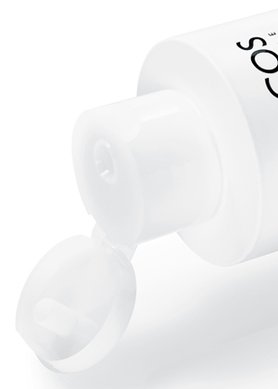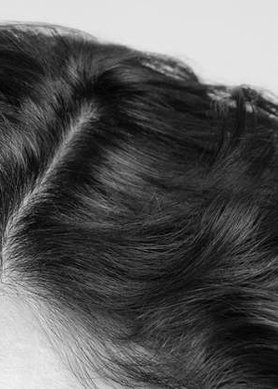
As individual scalp concerns, oily hair and dandruff can be tough to manage. But if you experience a combination of greasy hair and dandruff, it might be time to address your scalp imbalances with a specialised hair care regimen. Oily scalp dandruff requires a different approach than other kinds of dandruff since it can be exacerbated by the scalp’s high sebum levels. So, Dercos Australia have stepped in to share their expert insights on the causes of oily dandruff and how you can manage this scalp concern with targeted products and effective hair care practices.
Oily dandruff vs dry dandruff
Dandruff is a very common scalp concern worldwide, but there are several different types of dandruff that can affect the population. In fact, there are a few key differences between oily dandruff vs dry dandruff:
Dry dandruff – characterised by dry, white, loose flakes that shed easily onto clothes and surfaces. Dry dandruff can happen when the scalp is lacking essential moisture, which is often a result of cooler temperatures, overly hot showers, or certain hair care products.
Oily dandruff – this type of dandruff presents as large yellowish flakes. Oily dandruff flakes are easy to spot on the scalp and hair because excess sebum makes them clump together.
What causes oily dandruff?
Unlike dry scalp dandruff which can have external triggers, individuals with oily scalp dandruff will already have an oily-prone scalp from overactive sebaceous glands. However, individuals do not get dandruff from oily hair; dandruff is caused by imbalances in the scalp’s microbiome.1 These imbalances trigger skin cells to shed at an accelerated rate, where they collect on the scalp and hair in scale-like patches.2 With more sebum to cling to, oily dandruff sticks to the scalp, causing discomfort and itching sensations.
How to manage oily scalp dandruff
Finding a solution to greasy hair and dandruff can seem challenging, but there are a number of hair care and lifestyle habits you can make to alleviate these concerns:
- Use the right hair care products
- Make sure you are washing your hair enough
- Avoid heat styling tools
- Support hydration on the scalp
Continue reading as we expand upon these tips to manage oily scalp dandruff and how to prevent dandruff from recurring in the future.
1. Use a targeted oily dandruff shampoo
The best tool to manage greasy hair and dandruff is a shampoo that is formulated with targeted ingredients to address your scalp type and concern. So, what shampoo is good for oily hair and dandruff? You’ll want to look for formulas that include dandruff-fighting heroes: selenium disulfide and salicylic acid. Selenium in hair care works to control the root cause of dandruff and rebalance the scalp’s delicate microbiome. Meanwhile, using salicylic acid for hair helps to exfoliate dead skin cells on the scalp, regulate oil production and deeply cleanse the hair follicles.
Dercos Anti Dandruff DS Shampoo for Normal to Oily Hair harnesses these powerhouse ingredients to comfort the scalp and reduce up to 100% of visible dandruff*. You can also alternate with the Anti Dandruff K-Deep Purifying Shampoo once you’re in the maintenance phase of hair care. The purifying shampoo is suitable for even daily use, gently exfoliating dandruff and scalp residue.
*Consumer test on 262 subjects after 2 weeks of regular use
2. Increase your hair washing frequency
If you’re prone to excess oil, you might have come across the term ‘training your hair’ – a method people use to stretch out hair washes as a means to minimise oil production. Rest assured, this a myth; you cannot train your scalp to produce less oil, just like you can’t train your skin type to behave differently. With this in mind, you can still evaluate how often you are washing your hair because it may be too little or too much – which can affect oil levels.
If you experience oily hair and dandruff, it’s important that you don’t allow oil, dead skin cells, product and other debris to build up on the scalp. Washing with your targeted hair care products with key anti-dandruff ingredients is going to adequately cleanse the hair and reduce this buildup without drying out the scalp. If using the Dercos Anti-Dandruff DS Shampoo for Normal to Oily Hair, we recommend washing your hair 3 times per week for 4 weeks while targeting existing dandruff.
3. Reduce heat styling on the scalp
Damage from excessive heat styling is common, and it can disrupt your scalp’s microbiome. When this occurs, it can exacerbate oily dandruff and other scalp concerns as well as harming the surface of the hair shaft.3 To cultivate a healthy scalp and environment for hair growth, we suggest cutting back on your use of heat styling tools. When using a hair dryer, opt for gentle heat settings and hold the nozzle further away from your scalp to prevent direct heat. You might also opt for heatless hair styles such as braiding and claw clips or using heatless curlers to achieve your desired styles.
4. Nourish the scalp moisture barrier
In the same way that letting oil build up can disrupt the scalp, depriving it of moisture can also wreak havoc. A weakened, undernourished scalp barrier experiences more water loss than a balanced scalp which can lead to the dryness, flaking and scaling that we see in oily dandruff. We know that a healthy scalp is all about balancing your microbiome and natural oils, so it’s important to keep your scalp moisture barrier nourished – even if you have oily scalp dandruff. Continue with your targeted hair care routine and washing schedule, and ensure you eat a nutrient-rich diet and stay well hydrated.
1https://www.ncbi.nlm.nih.gov/pmc/articles/PMC6180232/
2https://pubmed.ncbi.nlm.nih.gov/16382685/
3https://www.telegraph.co.uk/health-fitness/conditions/skin/scalp-microbiome-healthy-thick-hair/






